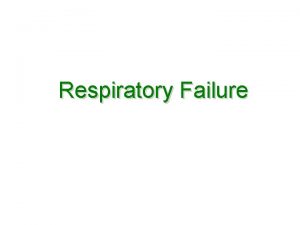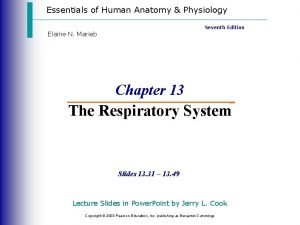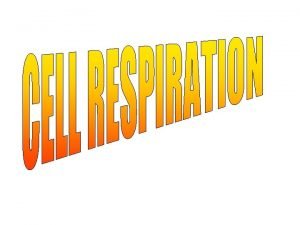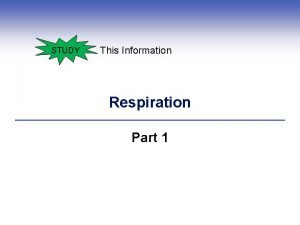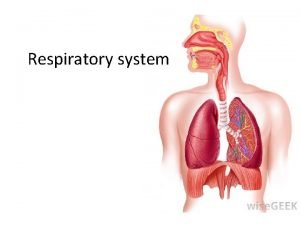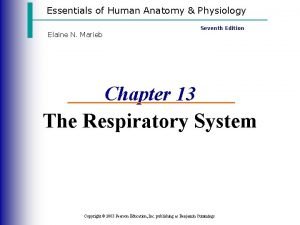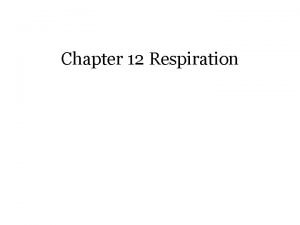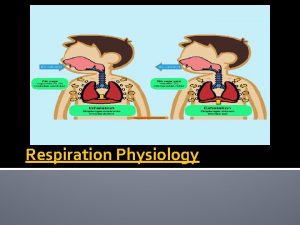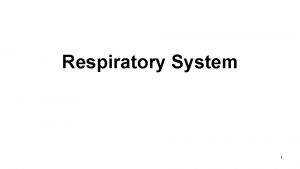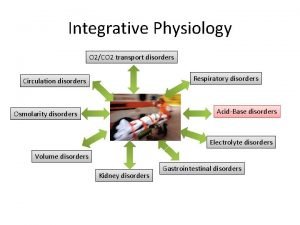Respiration External Respiration exchange of O 2CO 2








- Slides: 8

Respiration External Respiration: exchange of O 2/CO 2 between air/blood at alveoli Internal Respiration: exchange of O 2/CO 2 between blood & tissue fluid Cellular Respiration: production of ATP in mitochondria: requires O 2 , releases CO 2 1

External Respiration - alveoli/capillary walls are one cell layer thick - gas exchange occurs by diffusion alone - tissue fluid in alveoli [O 2] ↑ to ↓ , [CO 2] ↓ to ↑ - blood in alveoli capillaries [O 2] ↓ to ↑, [CO 2] ↑ to ↓ Hemoglobin: iron-containing respiratory pigment found in red blood cells, ↑ O 2 carrying capacity of blood 60 times ~ 200 million hemoglobin molecules per RBC, each composed of 4 polypeptide chains connected to 4 heme groups (contain iron), - 4 O bind per Hb 2 - can carry O 2, CO 2, H+, CO (prevents normal respiration) 2

External Respiration - most CO 2 carried in blood as bicarbonate ion (HCO 3 -), CO 2 leaves blood in reaction catalyzed by enzyme carbonic anhydrase (red blood cell) blood to alveoli H+ + HCO 3 - → H 2 O+ CO 2 carbonic anhydrase - small amount of CO 2 in blood carried by hemoglobin (carbaminohemoglobin) Hb. CO 2 → Hb + CO 2 blood to alveoli - Hb takes up O 2 in ↑ amounts as pressure of O 2 ↑ until ~100 mm Hg alveoli to blood Hb + O 2 → Hb. O 2 (oxyhemoglobin) 3

4

External Respiration Temperature Effects: - Hb takes up O 2 more readily in ↓ temperature lungs - Hb gives up O 2 more readily in ↑ temperature tissue 5

External Respiration p. H Effects: - Hb takes up O 2 more readily in more basic/neutral lungs - Hb gives up O 2 more readily in more acidic tissues 6

Internal Respiration - tissue fluid has ↓O 2 due to cellular respiration: O 2 diffuses into tissue blood to tissue (oxyhemoglobin) Hb. O → Hb + O (deoxyhemoglobin) 2 2 - some CO 2 from cellular respiration taken up by hemoglobin in blood (carbaminohemoglobin) Hb. CO → Hb + CO 2 2 tissue to blood - most CO 2 combines with H 2 O to form carbonic acid dissociates to H+, HCO 3 - (bicarbonate) tissue to blood RBC plasma + + HCO H O + CO → H 2 2 3 3 - 2 7 (carbonic anhydrase) buffer, keeps blood p. H constant

8


